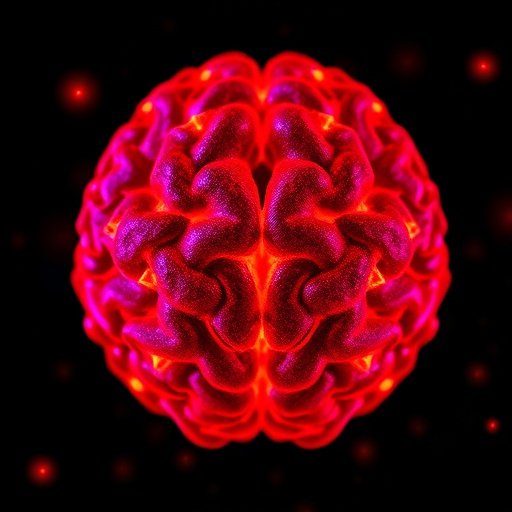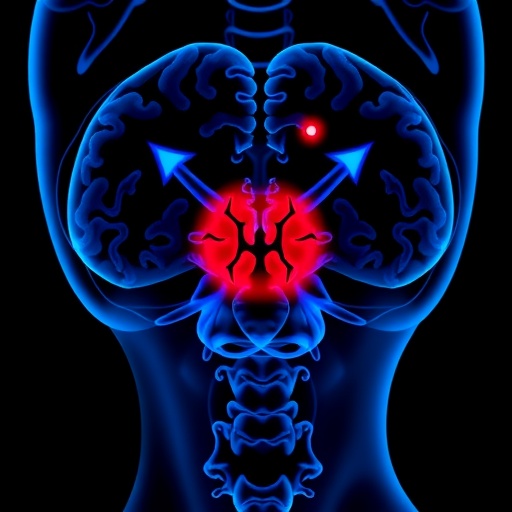September 5, 2025, New York — Glioblastoma multiforme (GBM), the most aggressive and common adult brain cancer, remains one of the most formidable challenges in oncology. Its lethal nature is compounded by the extensive genetic heterogeneity and intrinsic plasticity of its cancer cells, leading to the presence of resilient subpopulations within tumors that evade almost all existing therapies. Moreover, GBM’s microenvironment actively suppresses immune responses, rendering immunotherapy largely ineffective. These dual sources of therapeutic resistance have long frustrated researchers and clinicians alike, leaving patients with a median survival of barely over a year after diagnosis.
Recent groundbreaking research from Ludwig Lausanne, led by Johanna Joyce and former postdoctoral fellow Ángel Álvarez-Prado, marks a pivotal advance in understanding and potentially overcoming GBM’s stubborn defenses. Published in the current issue of Cell Reports, this study zeroes in on ADAR1, a protein that acts like a molecular “off-switch” for the innate antiviral defense system within mammalian cells. By disabling ADAR1, the researchers demonstrate a simultaneous dual disruption of tumor growth dynamics and the tumor’s immunosuppressive microenvironment, offering a novel therapeutic pathway that could radically transform GBM treatment.
At the cellular level, ADAR1 plays a vital role in preventing unwarranted activation of antiviral pathways by chemically modifying endogenous double-stranded RNA (dsRNA) species. Cells inherently produce dsRNA molecules, but they are typically “edited” by ADAR1 to avoid being mistaken for foreign, virus-derived RNA. This editing suppresses the internal antiviral alarm that would otherwise provoke the production of type I interferons and spark a potent immune response. The delicate balance maintained by ADAR1 safeguards against autoimmune pathology but, paradoxically, also shields certain cancer cells from immune detection and destruction.
In cancers such as GBM, a subset of tumor cells often expresses interferon-stimulated genes (ISGs), rendering them potentially susceptible to disruptions in this antiviral equilibrium. Joyce’s lab investigated whether this dependency on ADAR1 could be therapeutically exploited. Using a combination of genetically engineered mouse models mimicking the heterogeneity of human GBM as well as patient-derived tumor cell cultures, the team systematically deleted ADAR1 and observed profound effects. Loss of ADAR1 not only arrested the proliferation of diverse tumor cell populations but also reprogrammed the tumor microenvironment (TME) from its characteristic immunosuppressive state to one that actively recruits and mobilizes immune effector cells.
Mechanistically, ADAR1 deletion unleashed an endogenous antiviral signaling cascade typically muted in tumor cells. This cascade induces intracellular pathways that halt protein synthesis, effectively locking cancer cells in a non-proliferative state. This cellular stress response was striking in tumor cells but absent in normal neural cell cultures, suggesting a therapeutic window that might spare healthy brain tissue. The specificity of this effect opens new avenues for targeted treatments that could avoid the severe collateral damage often seen with conventional therapies.
Crucially, the immunological landscape within the GBM microenvironment underwent a dramatic shift upon ADAR1 loss. The team documented increased infiltration and activity of cytotoxic CD8+ T cells, pro-inflammatory macrophages, and natural killer (NK) cells—key players in anti-tumor immunity. Concurrently, populations of immunosuppressive cells, which usually shield the tumor from immune attack, were depleted. This dual mode of action—direct tumor cell arrest combined with immune activation—embodies a one-two punch that stands to overcome the two fundamental barriers that have long stymied GBM therapy.
Álvarez-Prado, who now leads his own research group at the Luxembourg Institute of Health, highlighted the translational potential of these findings. He noted that targeting ADAR1 could revolutionize GBM treatment by offering a strategy effective across genetically diverse tumors, sparing normal brain cells while simultaneously unleashing the immune system against the cancer. This broad applicability is particularly significant given the notorious intra- and inter-tumoral heterogeneity of GBM, which has been a critical obstacle to uniformly successful treatments.
Looking ahead, the Joyce laboratory intends to focus efforts on the development of small molecule inhibitors of ADAR1 that can efficiently cross the blood-brain barrier, a notorious challenge in neuro-oncology drug design. Preclinical studies using these inhibitors in models that closely recapitulate human disease will be essential for validating this approach and refining dosage and administration regimens. Such studies could pave the way for clinical trials, potentially heralding a new era in GBM therapeutics.
This work builds on a growing body of literature that underscores the role of ADAR1 in cancer immune evasion. Previous research in melanoma demonstrated improved immunotherapy responses following ADAR1 deletion, and the current study extends these insights into the realm of brain cancer. By elucidating the mechanisms by which ADAR1 safeguards tumors from innate immune signaling and revealing the therapeutic vulnerabilities that arise from its loss, this research advances the frontiers of cancer immunology and precision medicine.
The implications of activating the body’s innate virus-fighting machinery against GBM represent a paradigm shift. Rather than relying solely on external drugs or immunotherapies, this strategy harnesses intrinsic cellular antiviral pathways previously suppressed within tumors. Enhancing endogenous immune detection and reprogramming suppressive microenvironments may break the therapeutic stalemate that has persisted for decades in brain cancer treatment.
In summary, this pioneering study ushers in hope against a cancer type that has long evaded effective control. By targeting ADAR1, a molecular switch that balances antiviral immunity within cells, researchers have established a promising avenue for both halting tumor progression and engaging the immune system’s destructive potential. This dual approach might finally shift the landscape of glioblastoma from one of inevitable decline to one of meaningful survival and improved quality of life.
Subject of Research: Glioblastoma multiforme (GBM), ADAR1 protein, tumor microenvironment, cancer immunotherapy
Article Title: ADAR1 Inhibition Reprograms Glioblastoma Microenvironment and Halts Tumor Proliferation
News Publication Date: September 5, 2025
Web References: https://www.ludwigcancerresearch.org/scientist/johanna-joyce/; https://www.cell.com/cell-reports/fulltext/S2211-1247(25)00922-2
Image Credits: Ludwig Cancer Research
Keywords: Glioblastoma, ADAR1, tumor microenvironment, immunotherapy, interferon-stimulated genes, glioblastoma treatment, cancer immunology, brain cancer, innate immunity
Tags: ADAR1 protein in cancer therapybrain tumor immunotherapy challengescancer research breakthroughs 2025dual disruption of tumor growthgenetic heterogeneity in glioblastomaglioblastoma multiforme treatmentinnovative approaches to brain cancermolecular mechanisms of cancer resistanceoncological challenges in glioblastomaovercoming cancer therapeutic resistancetargeted therapies for brain tumorstumor microenvironment and immune suppression





